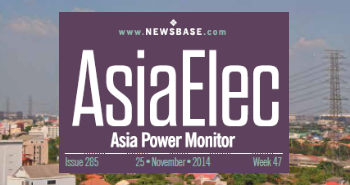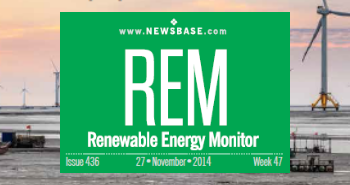Southeast Asia expands pumped hydro to boost energy storage
.jpg)
As Southeast Asia rapidly transitions toward renewable energy, countries across the region are investing heavily in pumped hydro energy storage (PHES) to enhance grid stability and support sustainable growth.
This innovative technology, which stores energy by moving water between reservoirs at different elevations, is becoming essential in the region’s energy strategy. With its ability to capture surplus power from intermittent sources like solar and wind and release it during peak demand, PHES provides a powerful solution for balancing the grid - a critical need as Southeast Asia's energy demands continue to rise.
The region’s economic and urban expansion, coupled to ambitious climate targets, places Southeast Asia at the forefront of renewable energy adoption. The International Energy Agency (IEA) projects that the region’s energy demand will grow by 60% by 2040, underscoring the need for reliable energy storage to stabilise these rapidly evolving grids. Southeast Asian countries, which benefit from mountainous terrain and abundant water resources, are ideal candidates for large-scale PHES projects.
As countries such as Vietnam, Thailand, Indonesia, Malaysia, and the Philippines embark on significant PHES initiatives, pumped hydro is set to play a key role in reducing fossil fuel reliance and moving toward a resilient, low-carbon energy future across the region.
Rising demand drives storage need
With its rapid economic growth and urban expansion, Southeast Asia is witnessing some of the world’s highest electricity demand growth rates. According to the International Energy Agency (IEA), the region’s energy demand is expected to surge by 60% by 2040. Meeting this demand sustainably has become a top priority, prompting regional governments to adopt innovative energy storage solutions like PHES. By storing excess energy generated from renewables during off-peak times and releasing it during peak demand, PHES can enhance grid stability, reduce reliance on fossil fuels, and support the region’s growing energy needs.
The science behind PHES
Pumped hydro energy storage is a well-established form of large-scale energy storage, ideal for stabilising grids with high levels of renewable energy. The technology works by using excess power - often from renewable sources - to pump water from a lower reservoir to an upper reservoir. During periods of high energy demand, the stored water is released back down through turbines to generate electricity. Compared to lithium-ion batteries, which can be costly and have limited lifespans, PHES offers a durable, cost-effective solution for large-scale storage with systems that can operate for over 50 years.
The region’s mountainous terrain and abundant water resources make Southeast Asia especially well-suited for PHES projects, allowing countries to leverage local geography in their renewable transition.
Key developments across the region
Several Southeast Asian countries have already initiated significant PHES projects to support their renewable energy targets and improve grid resilience.
-
Vietnam: A regional leader in renewable energy development, Vietnam has seen rapid growth in solar and wind capacity. To stabilise its grid amid these variable sources, the country has prioritised a 1,200 MW pumped hydro project in the Central Highlands, aimed at reducing grid congestion and enhancing energy security.
-
Thailand: As a pioneer in PHES, Thailand has operated two major pumped hydro plants since the 1980s. The government is now expanding PHES capacity to decrease its reliance on natural gas and maintain grid stability as renewable penetration rises.
-
Indonesia: Given its archipelagic geography, Indonesia faces unique energy challenges that make centralised grid infrastructure costly and complex. PHES projects are helping Indonesia to integrate renewables and reduce its dependence on coal, a key part of its strategy to reduce greenhouse gas emissions by 29% by 2030.
-
Malaysia: Malaysia has launched PHES projects, such as the 300 MW Hulu Terengganu facility, to support its renewable energy targets. These projects leverage Malaysia’s natural water resources to create a more stable, emission-reducing energy system.
-
Philippines: With its many islands, the Philippines is using PHES to address energy distribution challenges. The country’s 140 MW pumped hydro plant in Luzon will boost grid stability and support further renewable energy growth.
Advantages of pumped hydro in the green transition
Pumped hydro energy storage offers numerous benefits that support Southeast Asia’s renewable energy ambitions.
These include grid stability as solar and wind generated power which can be unpredictable, can create fluctuations in the power supply. Pumped hydro balances these sources by storing surplus energy during off-peak hours and releasing it when needed, reducing the risk of power outages. Emission reduction benefits from PHES too, supporting renewable integration. Southeast Asian nations can reduce their dependence on fossil fuels, moving closer to their Paris Agreement commitments to cut greenhouse gas emissions.
Challenges to expanding PHES in Southeast Asia
Despite its advantages, PHES development faces significant obstacles.Environmental impact is a major issue as large reservoirs needed for PHES can impact ecosystems, displace communities, and affect biodiversity. To address this, Southeast Asian countries are exploring closed-loop and underground PHES systems, which minimise environmental disruptions by isolating reservoirs from natural water sources. High initial costs too can be off-putting as PHES projects require substantial upfront investment and long construction timelines. Although operational costs are low, securing initial funding remains challenging. To mitigate these barriers, countries such as Vietnam and Indonesia are forming partnerships with organisations like the World Bank and the Asian Development Bank to secure financing.
Regulatory and policy hurdles must also be overcome as effective PHES deployment requires a supportive regulatory environment for financing, construction, and grid integration. Some countries in Southeast Asia face regulatory inconsistencies that can delay project implementation, though governments are actively working to improve policies and streamline PHES expansion.
Looking ahead
As Southeast Asia advances toward its renewable energy goals, pumped hydro storage will play an increasingly vital role. Innovations like closed-loop systems and underground reservoirs may reduce environmental impacts and costs, further enhancing the appeal and feasibility of PHES across the region. In the context of global climate priorities, Southeast Asia’s focus on sustainable energy aligns with international goals, underscoring the importance of pumped hydro as a crucial technology in achieving a resilient, low-carbon future.



Follow us online